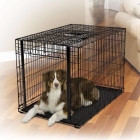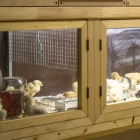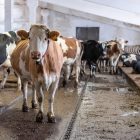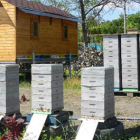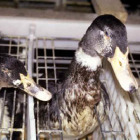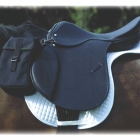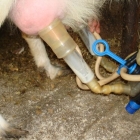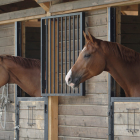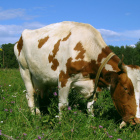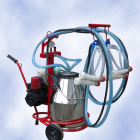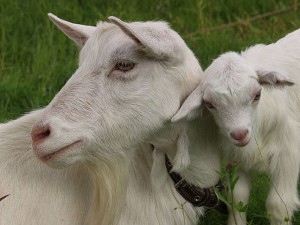 This spring was comprehended by a mountain - my young, beautiful, gentle goats squirrel and Milka died a few days after the goat, although it was easy. Attempts to save them turned out to be unsuccessful, since the doctors treated the stomach, that is, the consequence, and not the reason. An opening did not reveal the causes of death. When the second goat fell ill, it became clear to me that it was a pares. This year, six goats died in the neighboring village. "
This spring was comprehended by a mountain - my young, beautiful, gentle goats squirrel and Milka died a few days after the goat, although it was easy. Attempts to save them turned out to be unsuccessful, since the doctors treated the stomach, that is, the consequence, and not the reason. An opening did not reveal the causes of death. When the second goat fell ill, it became clear to me that it was a pares. This year, six goats died in the neighboring village. "
Let's try to figure out why animals died. Such a pretty most often comprehends cows and goats, which give a lot of milk, recordists. Obviously, high productivity, and therefore, the increased metabolism is the phenomenon is abnormal in the life of the animal. All organism systems in this case work "to wear", distilling through the udder a huge amount of blood, "loaded" nutrients, and forming milk. But it is not necessary for a cow or goat in such quantity to feed the goat, calf. Therefore, the dairy animal is forced to work with a large load on us with you. That is why the owners are obliged to especially follow the health of any burenki or proteins so that there is no breakdown, similar to the one in this article. And one of the troubles of such a breakdown - Parese.
The exact cause of the postpartum pare by scientists is not yet clarified. It is assumed that it occurs when there is not enough calcium or sugar in the blood. Maybe giving a lot of milk, goat or cow along with him loses both.
Signs of the masters of the hosts usually notice a few days after childbirth. First, as in the event of any illness, the animal is reluctant eats or completely refuses feed, stops the chewing. The muscles are then weakening, they begin to tremble, the cow or goat crosses the legs insecurely, it is shaken, finally lies up and can not stand. Typically, the sign of ailment of the people is considered to increase the temperature. During the paresa, this does not happen. Since there is no cheer and weakened the intestinal movement, it may indeed seem that the animal simply "eaten something." But I recently had a childbirth, it should be alert.
There are more dangerous cases. The sick animal looks dull, it falls on the side and the head puts on the breast always a living goat, if you pour it with a needle, I will not even turn it on 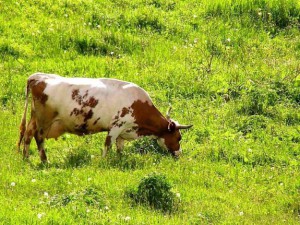
Teachers in veterinary universities tell students that parires - a dangerous disease, but timely treatment of it is very grateful work, because the animal often recovers 1 cotton in front of the owners.
What to do for this? Can be administered under the skin
20% novocaine solution (2.5 - 5 ml). But the main method of treatment is pumping into the udder of air. In the first aid kit, there should always be a dairy catheter. It is boiled, the animal lying on his side is a little sink, nipples wash and rub with alcohol. To pump air, you can apply a rubber pear from the pulverizer, which is sprayed with cologne, or a bicycle pump. It is useful to insert a filter into the rubber tube so that air without dust flows into the udder. It is made from a glass tip from the eyepipette, putting a clean mill in it.
By gathering such a "reviving" device, the air is downloaded - not in a hurry, first in one, then to another half of the udder (the cow is still on the third and fourth lobe) - as long as, by easily clicking the finger on the udder, you will not hear such a sound, As when tapping on the ball. Then the catheter is taken out, the nipples are explained for 15 minutes, but so that blood circulation does not stop. After that, carefully massage udder and, having turned the leg of the animal, putting it on the stomach, thoroughly rub the straw back, breast. Cell and warmed, strengthened with something warm.
After 6 hours after such efforts, treatment will not be crowned with success and the animal will not affect, it does not use it, it is recommended to repeat the procedure.
In order for you to give an animal on your own timely help, I advise everyone to read the book by V. Karpova "Obstetrics and the Gynecology of Small Pets".
Health of cows and goats
Comments leave a comment
 Start a discussion ...
Start a discussion ...


